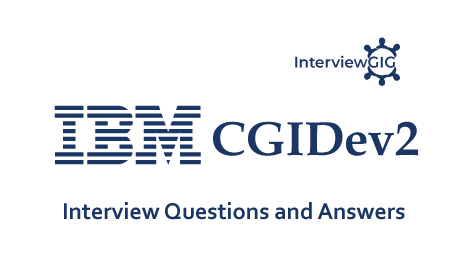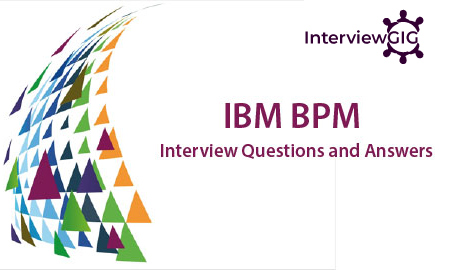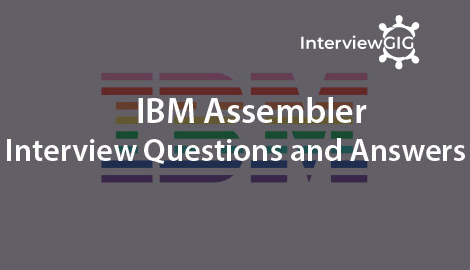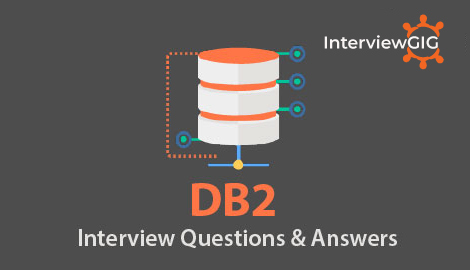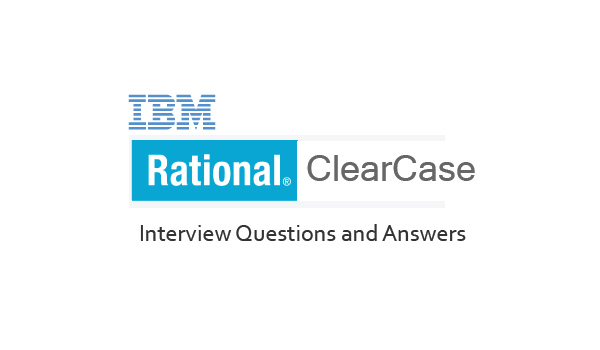Can you explain Cognos TM1?
IBM Cognos TM1 (formerly Applix TM1, formally Sinper TM1 – Table Manager 1) is enterprise planning software used to implement collaborative planning, budgeting and forecasting solutions, as well as analytical and reporting applications. Data in IBM Cognos TM1 is stored and represented as multidimensional OLAP cubes, with data being stored at the “leaf” level. Computations on the leaf data are performed in real-time (for example, to aggregate numbers up a dimensional hierarchy). IBM Cognos TM1 includes a data orchestration environment for accessing external data and systems, as well as capabilities designed for common business planning and budgeting requirements (e.g. workflow, top-down adjustments).
Why did IBM Cognos TM1 Web change the technology from .NET to Java?
Changing IBM Cognos TM1Web to be a java-based application allows the same version of the application to run on multiple platforms. Cognos TM1 Web version 10.2 is the first version that will be able to run on a non-Microsoft Windows platform. The initial release supports MS Windows, AIX, and zLinux. TM1 Web 10.2 has a service-oriented architecture with a number of improvements that increase performance and usability:
Ajax technology for client-side rendering of formatting. Previously, the entire sheet needed to be rendered on the web server and pushed to the client machines. The improvement here is most noticeable with Web sheets, which are generally dense in formatting. Web sheets now persist locally in the browser cache.
Incremental updates. Instead of re-sending all values to the client machine, only changed values need to be sent to the client. This change significantly limits the amount of data required to be sent back and forth between server and client.
No TM1Web Server-based Excel requirement. You no longer need Microsoft Excel on the web server for publishing or exporting.
Better affinity between Excel and web rendering. Microsoft Excel sheets provide better fidelity when rendered on the web.
Can TM1 Web be set up for load balancing?
It is possible to set up TM1 Web underneath a load balancing product. A load balancing product is not provided by IBM. To set up TM1Web for load balancing, install TM1Web version 10.2.0 on multiple servers behind a load balancing product. TM1 Web’s API is not stateless and will require sticky/persistent sessions.
Where is TM1 Web Logging information found?
TM1 Web still outputs a log file. The location of this log file has changed to install_dir\\webapps\tm1web\WEB-INF\logs. If you are having problems with TM1 Web, check this log to find out more about the errors that may have been generated.
How do you use TM1 cubes in Framework Manager?
TM1 v10.1 must have the interoperability function configured to allow packages to be published from TM1.
Define TM1 architecture?
TM1 is based on client server architecture and different components that interact with each other in a seamless manner to achieve the desired functionality. The following figure depicts the development process in a broad manner:
As depicted in the preceding figure, multi-dimensional cubes reside on TM1 data servers. These cubes in turn take their dimensional structure from multi-dimensional models, created by the modeler. Data is fed to these cubes from one of the backend data sources through inbuilt turbo integrator processes. Please note that these ETL processes can be modified as per the user requirements.
What are the basic features of Cognos TM1?
- Real-time, interactive multidimensional database also with write-back functionality
- 64-bit, in memory OLAP server capable of concentrate huge volumes of data
- Enterprise level planning and analysis capabilities
- Guided modelling environment to facilitate planning, analysis and forecasting
- Rapid development of flexible models, including profitability models, without batch processing
- Integrates with IBM Cognos Business Intelligence, to establish a single view of performance
How do you use TM1 cubes in Framework Manager?
TM1 v10.1 has the interoperability function configured to allow packages to be published from TM1.
How many types of viewers available in TM1?
There are 3 types of viewers in TM1.
- Cube Viewer
- Web Sheet Viewer
- Navigation Viewer
How to run Turbo Integrator Process from Command Line?
To initiate the TI process TM1RunTI is a command line interface tool.
Define Data Tab?
Series of statements that manipulates values for each record in data source.
Define TM1 package connector?
TM1 package connector helps to import data from packages/dimensions and custom queries.
What is Epilog Tab?
Series of statements that is to be executed after the data source is processed.
Name the function which is used to serialize the TI process?
Synchronized () function can is used to serialize TI process so they can be processed sequentially.
What are the functions required to be called for enabling or disabling the bulk load of mode?
EnableBulkLoadMode() = Enable
DisableBulkLoadMode() = Disable.
What is the limit of string length in Turbo Integrator?
The limit of string length in Turbo Integrator is 8000 single byte character. If the length will become more 8000 bytes then it gets truncated.
What are the flaws of Chore Start Time?
TM1 executes chores in GMT standards. It doesn’t have any auto mechanism to accommodate DayLight Saving. Its Chores Scheduled time should be edited when DayLight time begins and ends.
Name the different procedures within TI?
- Defining Data Source
- Setting Variables
- Mapping Data
- Editing Advanced Scripting
- Scheduling the completed Process.
Name the window by which you can create your own custom scripts?
You can create your own custom scripts using Advanced Window
How you can enable Bulk Load Mode in TI?
In Prolog or Epilog section of TI, Bulk Load mode can be enabled.
It always recommended that Bulk Load Mode should be enabled in Prolog section.
Name the sub-tabs which are in advance tab of TI
The sub-tabs which are in advance tab of TI are:
- Prolog
- Metadata
- Data
- Epilog
What is the meaning of Ending Bulk Load mode?
All the system and User threads will be resumed and user logins will also be allowed.
Name the data sources which are available with TI?
Data Sources available with TI are:
- SAP via RFC
- IBM Cognos Packages
- Microsoft Analysis Services
- Relational databases using ODBC Connectivity
- Comma delimited text files including ACII files
- Other Cubes and Views
What is Chore Commit property?
- It allows you to specify if the processes in chores will be committed as a single transaction or either as multiple transaction
- In a single commit mode all processes are committed as a single transaction. It is default by nature.
- In multiple commit modes any processes that need to be committed do so as they are processed.
- It is possible to change chore property only when chore is INACTIVE.
Define snapshot?
Snapshot is nothing it’s only a copy of data, whenever we create any snapshot it only copies the exact data that is related to the particular report. It is used to compare reports.
For ex: we want to compare the report of this month with previous month.
Define Bulk Load mode?
It enables TM1 to run in a special optimized Single-user mode. This mode has a capacity to maximize the performance for dedicated tasks during the time when there is no load on server or at night time.
It doesn’t display a message to end-user to alert them. No new connections can be created.
What actually happens when Bulk Load mode starts?
- All the scheduled chores will be deactivated
- All the processing by other threads will be paused
- Running chores and any of the existing user threads will be suspended
- TM1 Top connections and all the system-specific threads will be suspended
Define Drill Through?
By using Drill-through reporting you can link from one report to another. There are number of ways to Drill Through:
Drill Through id developed with two reports
- Parent Report
- Child Report
What is the difference between list and crosstab?
List:
- List report show the data in row and column (detail information of report).
- List can be converted to Cross tab
Crosstab:
- Crosstab report show the data in grids, dimensions in row and column and measures in cells or in intersection point.
- Crosstab can’t be converted to list. There is no direct option available in Report Studio to convert the cross tab to list.
Give the options which are available after importing data using TI?
- Create Cube and populate data
- Create and Update dimensions
- Re-create Cube. It destroys the existing cube definitions and overwrites it
Define Prolog tab?
Procedure is executed before the data source for the TI is opened. TI directly goes to Epilog if the data source for the process is none and if there is no data source then Metadata and data tabs are ignored.
Define Metadata?
Series of statements that update or create cubes, dimensions and other metadata structures during the processing
What is the cube size?
2.0 GB. It depends as per your project requirements.
What kind of system requirement is needed to run TM1 for a small installation?
The minimum requirement to run the sample TM1 servers provided will be:
- Disk Space: Minimum 500 MB
- Memory: Minimum 2 GB RAM
- Processor: Pentium 4 or higher
- OS: Windows 2003(x86, x64), Windows 2008(x86, x64), Windows 7(x86, x64), Linux
What is the way of writing a FEEDER Statement when feeding one cube from another?
- Calculation statement always resides in the target cube, but the FEEDER statement should reside in the source cube.
- The Feeder is basically the inverse of the calculation statement in the Target Cube that requires the feeder.
What are the steps to troubleshoot the FEEDERS?
- Use Rules Tracer will be used to assist in the development and debugging of rules.
- The functionality of Rule Tracer is available in Cube Viewer
How does Rules Tracer help us?
- It traces FEEDERS; it ensures that selected leaf cells are feeding rules-calculated cells properly or not.
- It checks FEEDERS, ensures that the children of selected consolidated cells are fed properly or not. Check Feeders options is available from consolidated cells and it’s not available from leaf node.
Define the logic behind the Sparsity in cubes?
The more dimensions a cube has, the greater will be the degree of sparsity.
Define Over Feeding?
Over Feeding means defining feeders for consolidated cells. (Feeding a consolidated cell automatically feeds all children of the consolidation.)
Define Under Feeding?
Under Feeding means failing to the feed cells that contain rules-derived values. This always results in incorrect values and must be avoided at all costs.
What is the role of SKIPCHECK in TM1?
SKIPCHECK forces TM1 to use the Sparse Consolidation algorithm in all the cases.
What is the role of transformer?
It is used for building the Cubes (Multidimensional Structure used for OLAP processing).
Name the components of report studio?
- Insertable Objects pane
- Properties pane
- Explorer bar
- Report Viewer
Name the components of Report Net?
- Framework manager
- Cognos connection
- Query Studio
- Report Studio
Name the prompt which are available in Cognos?
- Value prompt
- Text Prompt
- Date prompt
- Time prompt
- Date and time prompt
Define Cognos Connection?
It is a Web portal for Cognos 8 and a component which interacts with the Content Store. It is a frontend to publish, find, manage, organize, and view organization’s business intelligence data.
Define Cognos Reporting tool?
It’s a reporting tool from IBM which helps in reporting and analysis of various data from a data warehouse.
Define Junk Dimension?
It is also called as garbage dimension. A junk dimension is a convenient grouping of typically low-cardinality flags and indicators.
Define is catalog and types of catalogs in Cognos?
Catalog is a file containing the information (Database tables) that Impromptu users need to create reports. Types of catalogs are:
- Personal
- Distributed
- Shared
- Secured
Differentiate between Power play transformer and power play reports?
Power play transformer: It is an ‘MOLAP’ tool using which one can create multi-dimensional structure called “CUBE”.
Power play reports: Power play for reports is used to generate report from the cube. Only one report can be generated from one cube. If you want ‘n’ reports you must create ‘n’ cubes.
Define Sparse Cube?
It’s a cube in which number of populated cells as a percentage of total cells is too low.
Define Query Subject?
A Query Subject is a collection of Query Items. Generally, query items have a defined relationship. It is primarily a database table upon which query action takes place.
